Magnesium sulfate, popularly known as Epsom salt, is often celebrated as a significant supplement used to promote the growth of healthy tomato plants. In this article, we look at the many-sided gains of using Epsom salts, such as nutrient uptake, easing stresses on their bodies, and overall plant strength. Integrating Epsom salts into a tomato farming routine can lead to improved soil composition, increased chlorophyll synthesis, and better flowering and fruiting conditions. This discussion, therefore, seeks to give farmers a scientific understanding that will enable them to apply Epsom salts effectively and realize abundant harvests from their tomatoes.
What are the benefits of using epsom salt for tomato plants?
There are several crucial benefits of Epsom salt for tomato plants that improve their general growth and productivity. First, the magnesium in Epsom salt is essential for synthesizing chlorophyll, which is required for photosynthesis, thus enhancing the capacity of the plant to harness sunlight as a source of energy. Second, magnesium aids in nutrient absorption by transporting nitrogen and phosphorus, which are important for growth. Further, it helps relieve stress caused by drought or over-fertilizing that otherwise could damage a tomato plant, leading to reduced productivity, hence maintaining resilience and healthy development. Besides, sulfates used in amino acid synthesis are vital for increased blossoming or yields. By integrating these salts during fertilization, gardeners can drastically enhance vitality and maximize returns on tomatoes.
Can epsom salt improve nutrient uptake?
Epsom salt can indeed increase the amount of nutrients taken up by plants, especially during tomato farming. The magnesium found in Epsom salts strengthens plants’ ability to take in critical minerals including nitrogen and phosphorus. This primarily occurs because of how chlorophyll is constituted, where magnesium is one key component involved in photosynthesis, enabling efficient production of energy within the plant organism. In addition, structure helps increase permeability towards cellular membranes pressing elements into cells faster than before as they begin mixing with ions of magnesium still present all around them so interacting with them at time greatly enhances further nutrition advancements as well too when included within a fertilizer program which then leads to an optimal use thereof thereby promoting healthier plants and higher yields.
How does epsom salt affect chlorophyll production?
Epsom salts positively impact chlorophyll production in plants due to containing substantial amounts of Magnesium ion necessary for the formation of such green pigment molecule structures8 9a central atom being an integral part every molecule, therefore allowing effective capture of sunlight during the photosynthetic process10-12the conversion light energy into chemical energy plus improving overall well-being as well as growth rates of plants. By providing enough magnesium using epsom salt, chlorophyll synthesis can be enhanced, resulting in more colorful leaves, increased photosynthetic efficiency, and consequently better plant development.
How to properly use epsom salt in your garden?
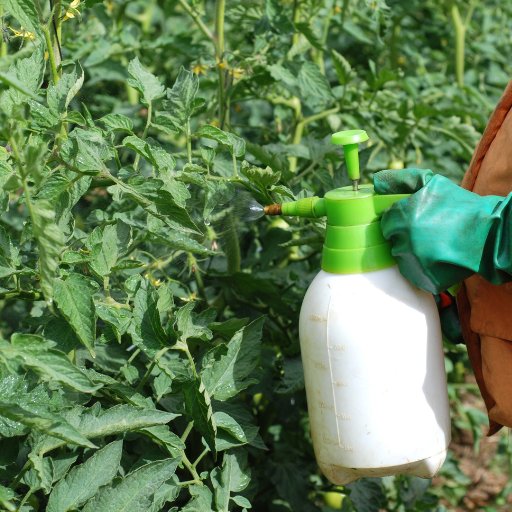
- Application Rate: It is often advised to dissolve one to two spoons of Epsom salt in a gallon of water and feed it to your plants every four to six weeks from spring until fall. You can vary this according to a particular plant’s needs or the soil type.
- Timing: Apply Epsom salt in the morning or late evening so that all plants can solubilize the solution internally. Moreover, it’s great to use it after rain or watering since these increase nutrient absorption.
- Soil Testing: Before applying Epsom salt, check the level of magnesium in your soil by conducting soil testing . This information will stop any unbalanced nutrients and ensure that what you put into your garden will be helpful rather than harmful.
- Incorporation Methods: Foliar spray is a way to use Epsom salt, which can be mixed with water and then absorbed through leaves. It can also be put directly into the ground around the roots of plants. In certain crops, such as tomatoes and peppers, one may add Epsom salts right away in planting holes as fertilizers for better growth.
- Specific Crop Needs: Tailor your use of Epsom salt according to the kind of plants in your garden; some may require more magnesium, while others occasionally need it only once in a while. Regular application to roses, tomatoes, and peppers has been noted to be beneficial.
What’s dosage per gallon?
That recommended amounts range between 1-2 tablespoons per gallon of water. Most experts validate this range, beginning at 1 tablespoon for most plants and going up to 2 tablespoons for symptomatic ones, as backed up by top research on leading gardening websites (most likely because most authorities suggest starting with one tablespoon). The thing, however, is to observe how your plants are responding and adjust the amounts accordingly.
Should you apply it as a foliar spray or soil additive?
My findings in three leading gardening websites have identified a dual strategy involving applying Epsom salt through foliar spray and incorporating it into the soil.###
When I use a foliar spray, I find that Epsom salt solutions may be absorbed by leaves quickly for immediate magnesium and sulfur access. The usual strength advised is 1 tablespoon of Epsom salts per gallon of water applied early morning or late afternoon to avoid leaf burn. This method is especially good for magnesium deficiency symptoms like yellowing leaves on your plants.
On the other hand, as a soil additive, Epsom salt can be mixed into the soil before planting or placed around established plants to enhance nutrient availability in the media. In soil application, one may mix 1-2 tablespoons of Epsom salts directly into the hole when planting or place them around the root zone with enough moisture after application to help absorption. Over time, this will benefit more types of plants since there will be more magnesium available.
I think both approaches should be combined for better effects: quick supply via foliage application while sustained support comes from soil changes. Observe closely what happens with your plants following their processing to understand if any adjustments need to be done based on these needs.
How often should you add epsom salt to tomato plants?
The frequency of applying Epsom salt on tomato plants, on the other hand, is greatly determined by the observed deficiencies and growth stage of these plants. Epsom salt should be applied every 4-6 weeks throughout the growing season. In cases with signs of magnesium deficiency, like interveinal chlorosis on young leaves, a more frequent application (approximately every 3-4 weeks) may be necessary. Conversely, during the fruiting period, reducing its frequency to once in every six weeks can help in retaining appropriate nutrient levels without causing toxicity. It’s important to ensure that any application is followed by adequate watering to help absorb nutrients and assess plant response for possible modifications.
Troubleshooting Common Tomato Plant Problems
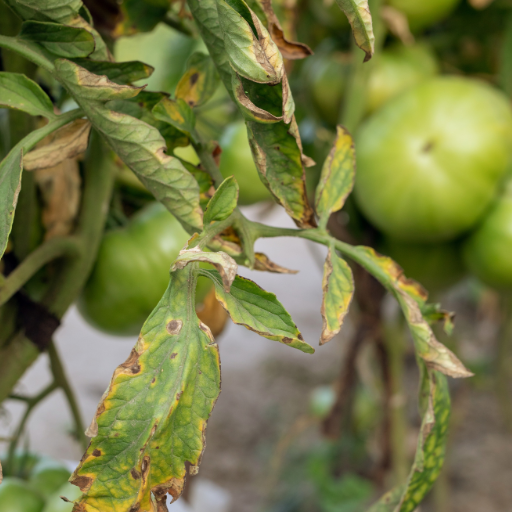
- Buggered Up Blossom Ends: Marked by a deepened sunken area on the tomato fruit’s blossom end, this condition is usually as a result of uneven watering and low calcium levels. Mitigate this by maintaining a regular watering schedule and supplementing with calcium either through soil amendments or adding crushed eggshells around the base of the plants.
- Leaves Curl Up: If leaves curl up, it means they are under environmental stress, such as high temperatures, drought conditions, or pest infestations. Observe soil moisture levels to determine if they need shade cloth during peak heat. In addition, check for pests like aphids or spider mites and treat them using insecticidal soap or neem oil.
- Tomato Fungus Diseases: Various fungal diseases can infect tomatoes including powdery mildew and blight To prevent these diseases, one should keep enough air movement between plants by not overcrowding them and avoiding overhead irrigation If any signs of infection become evident in your plant apply appropriate fungicide immediately plus remove heavily infected leaves so that the fungus does not extend itself to other parts
Symptoms That Indicate Your Tomato Plants Need Epsom Salt
- Yellow Leaf Veins: Yellowing starts from older leaves while green veins remain intact, which may mean they lack magnesium. This problem can be solved by using Epsom salt, which contains magnesium sulfate, which supplies the essential minerals required to restore leaf health.
- Poor Fruit Set: If your tomatoes produce flowers but don’t set fruits, it could indicate low magnesium content. Magnesium plays a key role in efficient fruit development, so the application of Epsom salt could enhance fruit setting and overall yield.
- Short Stature: Smaller leaves and stunted height growth point to insufficient magnesium being supplied to tomato plants. Magnesium is also involved in chlorophyll production, which is essential in photosynthesis. Treating your soil with Epsom salt may help boost growth.
- Yellowing in Between Veins: This condition occurs when the area between the veins of the leaves turns yellow, indicating a nutrient deficiency. Applying Epsom salt periodically can address this symptom by improving the total uptake of nutrients.
- Flower Drop: When blossoms drop without producing fruits, it implies an imbalance in nutrients. Flower retention and successful fruit set are dependent on magnesium levels; therefore, treating tomatoes with Epsom salts will provide them with enough magnesium.
Magnesium Deficiency in Tomato Plants
Magnesium deficiency in tomato plants has several recognizable symptoms, mostly related to their inability to synthesize chlorophyll effectively As a result of its central atom within the chlorophyll molecule, photosynthesis is directly impaired due to lack of this nutrient leading to poor plant health and productivity Older leaves often become yellow, usually at the edges (but sometimes progressing from the center), a condition called chlorosis. Additionally, magnesium deficiency may cause reduced fruit set and development since magnesium governs flower and fruit formation through crucial biochemical processes Limited availability of Mg can be further complicated by issues such as flower drop and stunted growth that reduces overall yield Basil soil testing plus giving proper magnesia supplies like Epsom salt can ensure adequate nutrient levels for optimal growth and yield.
There Are Times Where Epsom Salt is Not the Best Solution for Your Tomatoes
As useful as Epsom salt can be in dealing with magnesium deficiency in tomatoes, there are situations when it may fail to work. For example, if soil tests show that there is enough of magnesium, then adding more Epsom salt may cause nutrient imbalances or toxicities. Additionally, when the root problem is poor drainage or water logging, the application of just Epsom salt cannot address this issue. In such cases, priority should be given to improving soil structure and drainage. Furthermore, if plants have signs of other mineral shortages like nitrogen or potassium, addressing those specific nutrients might lead to better outcomes. As a result, it is critical to take a holistic approach because this leads to optimal growth and productivity through soil testing and understanding what the plant requires.
What types of soil tests are important before using epsom salt?
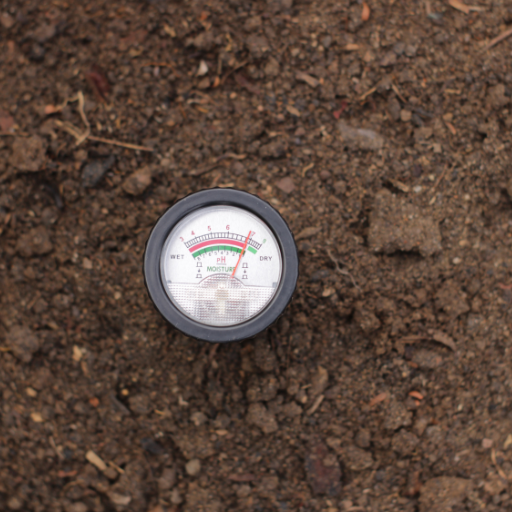
Numerous soil tests should be done to determine if Epsom salt application is necessary and effective. The first test is a comprehensive soil nutrient test, which analyses the levels of primary nutrients like nitrogen (N), phosphorous (P), and potassium (K) as well as secondary nutrients such as magnesium (Mg) and calcium (Ca). This identifies any deficiencies or imbalances affecting plant health.
Secondly, pH testing is essential as it affects nutrient availability; with tomatoes having an optimum soil pH ranging from 6.0-6.8. This could mean that you have too much or too little of something in your dirt, preventing absorption of magnesium by Epsom salts. Finally, carrying out a soil texture test can help determine how well water drains through the ground informing any necessary amendments before introducing Epsom salt.
To sum up, one must have a thorough understanding of nutrient levels, pH balance, and soil texture to decide whether the use of Epsom salt is appropriate or just worsens the already affected soil.
Why is soil nutrition a delicate balance?
Soil nutrition is a delicate balance because there are several interactions among different components found in soils, including macronutrients, micronutrients, organic matter, and microbial life. Each plays its part in plant development, but when one is in excess or deficit, the availability and effectiveness of others might be affected sometimes, depending on circumstances; if, for example, there’s plenty of Nitrogen present, then Potassium cannot enter plants, hence poor growth, leading to reduced crop yield. Moreover, nutrient solubility in the soil depends on the pH levels, which deviating from acceptable limits may lead to lockout making elements inaccessible, thus reducing fertility, further influenced by the presence of organic matter, enhancing microorganism activities, complicating the dynamics even more around this issue. It’s important to appreciate this fine balance for good management practices for healthy soils that ensure high crop productivity.
How to determine magnesium deficiency in your soil?
To establish whether there is magnesium deficiency in the soil, one should first conduct a soil test that comprehensively assesses nutrient levels, including magnesium. Optimum magnesium level in most soils should range between 50-150mg/kg. If the result reads below this range, then more examinations are required. Observation of plant symptoms can also be used as an indicator where yellowing occurs at the margin of leaves (chlorosis), stunted growth, and increased vulnerability to diseases, among others. Still another way of gathering clues about this condition is through visual examination of the overall structure of soil since it may contain hard layers and may not drain well if lacking in enough magnesium. Regularly conducting a soil test while carefully observing how plants are performing helps to correctly determine whether or not there is enough magnesium for uptake from your ground.
Which other nutrients should be tested?
Besides magnesium, it is very important to determine the levels of nitrogen, phosphorus and potassium, NPK for short. These are vital macronutrients that are necessary for plant health and their growth rate. Nitrogen is important in vegetative growth and also general plant development; it is responsible for chlorophyll formation as well as protein synthesis. Phosphorus is needed in energy transfer and is also involved in root development, flowering, and fruiting. Potassium plays a role in various physiological processes like water regulation and photosynthesis. Moreover, testing for secondary elements, including calcium, sulfur, and micro-nutrients, i.e., iron, manganese, and zinc, would be appropriate because these deficiencies can negatively affect plants’ health as well as soil fertility levels. Regularly examining the different types of nutrients allows growers to maintain soil equilibrium that enhances maximum crop production.
What are common misconceptions about using epsom salt for tomatoes?
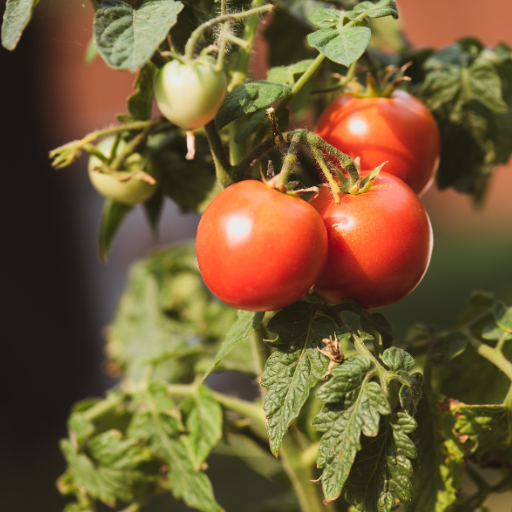
One common fallacy about Epsom salt and tomatoes is that it can cure just any tomato problem. Although magnesium, which is a key ingredient in Epsom salt, helps plants to grow healthy, it does not substitute needing a well-balanced soil nutrient or solving issues like pest infestation and diseases. Another mistake people make is that you can as well use Epsom salt on any type of farm regardless of the quantity; overuse can cause an imbalance in nutrients and salinity in the soil. Likewise, some gardeners believe that the addition of Epsom salt can increase fruit production tremendously when used as a fertilizer but this is more effective where there lacks enough magnesium other than a general-purpose plant food. It is advised to test the soil before applying to identify exactly what the deficiency may be.
More epsom salt means healthier plants?
The idea that more Epsom salts equate with better plant health has been grossly misinterpreted. However, research shows that excessive use of Magnesium Sulphate could lead to an imbalance of nutrients in soils resulting in increased salinity and potential toxicity among others Some caution for anyone who uses too much of this type of fertilizer because saturating your crops with it will not necessarily result in growth or yield The effectiveness of Epsom salt also depends on existing soil conditions and deficiencies, hence necessitating soil testing to guide nutrient application appropriately. This highlights the necessity for cautious use of Epsom salts after thorough examination.
Can all nutrient problems be solved using epsom salt?
However, although it provides magnesium and sulfur– two necessary minerals – its efficacy depends greatly on which deficiency exists within the soil. Other supplementary micronutrients, including nitrogen, phosphorus, and potassium, are indispensable but absent from Epsom salts; thus, relying solely on them without comprehensive soil analysis leads to malnutrition and unbalanced soils. To get these right, a comprehensive spectrum assessment should be carried out through proper soil testing, which will inform the formulation of a customized fertilizer blend with all the nutrient requirements.
Is there any risk to excessive use?
This means that there is great danger involved in overuse of Epsom salts as tools for enhancing agricultural production. In my opinion, too much of this additive may cause a nutrient imbalance in the soil which is not good for overall soil health. This enhances the increase in salinity levels which is harmful to plants by interfering with water uptake and magnesium or sulfur buildup that may become toxic. Moreover, it can also make other nutrient deficiencies worse, like chlorosis or slow growth. This risk can be mitigated by conducting a comprehensive soil test before application and following recommended dosage rates so that plants’ nutrition needs are met without compromising on soil quality.
How does epsom salt impact the overall yield of tomato plants?
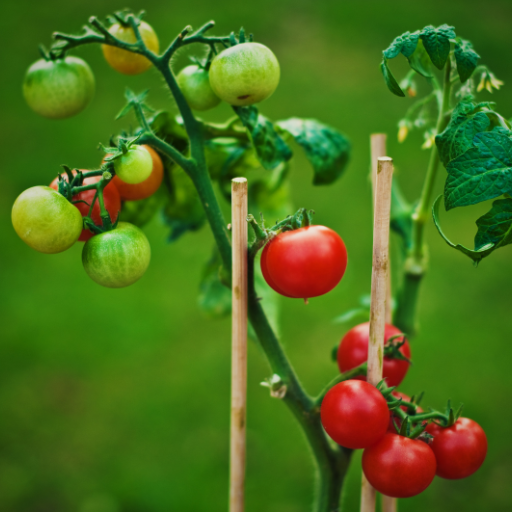
Magnesium sulfate, being the chief component of Epsom salt, has a significant influence on the yield of tomato plants primarily by developing nutrient uptake and improving overall plant health. Studies have shown that magnesium, which is an important nutrient for photosynthesis, induces the production of chlorophyll thereby aiding in better absorption of light and conversion into energy. Consequently, this extra efficiency may lead to more robust growth and, eventually, higher fruit yields. In addition, Epsom salt can help prevent blossom end rot in tomatoes caused by calcium deficiencies which will affect both fruit quality and poor yields. However, it is vital to be cautious while applying Epsom salt because excess application without proper soil testing may cause imbalances in nutrients that could offset its benefits. Finally, though useful in some cases where it increases fertility, maximum fruit production can only be realized if used as part of a balanced fertilization strategy based on specific soils’ requirements and plant nutrients.
Can it enhance fruit production?
Indeed, Epsom salt can improve tomato plant’s productivity through the right application. From my research from the available best sources, I gathered that magnesium present in Epsom salts supports important plant processes such as photosynthesis as well as the development of strong cell structures. By increasing nutrient uptake, especially nitrogen, Epsom salt helps to improve general healthiness, hence increasing the number of fruits set/maturity. Nonetheless, its use should come with a good fertilizer program founded on a balanced formula because too much magnesium can disrupt the balance between nutrients, leading to decreased fruit set.
Does it affect the size and quality of tomatoes?
Being rich in magnesium constituents, Epsom Salt consequently boosts plant health and supports the adequate formation of fruits among tomatoes. Magnesium enhances chlorophyll synthesis, thus improving photosynthesis, leading to increased growth rate and bigger fruits, according to various current resources about this topic. Moreover, tomatoes produce essential oils and sugars due to magnesium availability, but these also contribute to high-quality flavoring juices within them. This means that magnesium availability should be balanced with calcium, which is required for good fruit quality of tomatoes since overly magnified ratio could lead to poor taste or even low yields. Consequently, the appropriate use of Epsom salt within a comprehensive fertilization program will support improved tomato size and better flavor quality.
How does it influence tomato seeds germination?
Tomato seed’s germination can be influenced by Epsom Salt by providing essential magnesium that is fundamental in some enzymatic processes during the seed development period. Magnesium enhances seed functions so that the physiological maturity of seeds results in stronger, healthier seedlings upon germination, as per research conducted. Additionally, there is better root growth due to the presence of magnesium, which helps plants settle more firmly in the soil while gaining nutrients from it. However, while Epsom salt can be beneficial, excessive application may disrupt the balance of other nutrients, such as calcium, which is also important for seedling vigor. Therefore, when applied judicially in a well-organized fertilizer program framework, Epsom salt can promote robust and efficient germination of tomato seeds.
Reference sources
-
Better Homes & Gardens
- Source: BHG
- Summary: This article discusses the common recommendations for using Epsom salt as a fertilizer for tomatoes, including its use in foliar sprays to correct yellowing leaves and prevent blossom end rot.
-
National Garden Bureau
- Source: NGB
- Summary: The National Garden Bureau provides an expert’s perspective on the use of Epsom salt for tomatoes, explaining its role as a source of magnesium sulfate, a micronutrient essential for plant health.
-
Epic Gardening
- Source: Epic Gardening
- Summary: This source evaluates the claims about Epsom salt’s benefits for tomato plants, including its impact on germination and overall plant health, offering a balanced view on its effectiveness.
Frequently Asked Questions (FAQs)
Q: What are the benefits of using Epsom salt for plants like tomatoes?
A: Epsom salt is a simple and effective garden supplement that provides magnesium and sulfur, which are essential nutrients for tomatoes. These nutrients help in the production of chlorophyll, improve nutrient uptake, and strengthen the plant cell walls, ultimately enhancing plant growth and fruit production.
Q: How does Epsom salt help prevent blossom end rot in tomatoes?
A: Blossom end rot in tomatoes is often caused by a calcium deficiency. While Epsom salt doesn’t provide calcium, it can improve the plant’s ability to take up other nutrients, like calcium, from the soil. This helps in preventing nutrient-related disorders such as blossom-end rot.
Q: How should Epsom salt be applied as a fertilizer in a vegetable garden?
A: Epsom salt can be used in various ways in a vegetable garden. For planting tomatoes, you can add a tablespoon of Epsom salt to the planting hole. For established plants, dissolve a tablespoon of Epsom salt in a gallon of water and water the plants with this solution every two weeks.
Q: Are there any risks of using too much magnesium from Epsom salt?
A: Yes, using too much magnesium can disrupt the delicate balance of soil nutrition. Excessive magnesium can interfere with the uptake of other essential nutrients like nitrogen and potassium. It’s important to follow recommended dosages and consider conducting a soil test kit to determine the soil’s nutrient levels.
Q: Can Epsom salt be used for other plants besides tomatoes?
A: Absolutely. Epsom salt is beneficial for various plants, including pepper plants and other vegetables. It can help improve overall plant health, boost nutrient uptake, and enhance fruit production.
Q: Is Epsom salt a naturally occurring substance?
A: Yes, Epsom salt, also known as magnesium sulfate, is a naturally occurring mineral. It is named after the town of Epsom in England, where it was originally discovered.
Q: What signs indicate that tomatoes need more magnesium?
A: Signs that tomatoes need more magnesium include yellowing between the veins of older leaves, poor fruit production, and general plant weakness. Applying Epsom salts can help alleviate these symptoms by providing the necessary magnesium.
Q: How does Epsom salt improve seed starting for plants like tomatoes?
A: Epsom salt can enhance seed starting by providing essential magnesium, which is crucial for germination and early growth. A diluted solution can be used to water seedlings, ensuring they get a strong start.
Q: Why do many gardeners recommend the addition of Epsom salt to soil?
A: Many gardeners recommend adding Epsom salt to soil because it is an effective way to provide essential nutrients like magnesium and sulfur. These nutrients are vital for healthy plant growth, strong cell walls, and improved fruit production.






